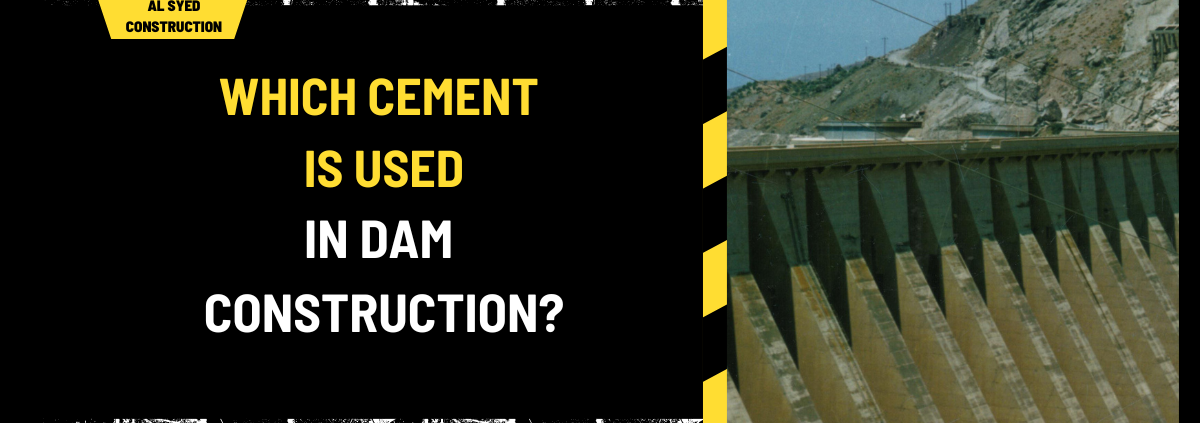Which Cement is Used in Dam Construction?
In the realm of dam construction, choosing the right type of cement is crucial for ensuring structural integrity, durability, and long-term performance. This article provides an in-depth exploration of the types of cement used in dam construction, their properties, and their specific applications.
Types of Cement Utilized in Dam Construction
1. Ordinary Portland Cement (OPC)
Overview and Composition
Ordinary Portland Cement (OPC) is the most commonly used type of cement in general construction, including dam building. It is made from a blend of limestone and clay, heated to form clinker, and then ground to a fine powder. OPC is known for its high compressive strength and versatility.
Applications in Dam Construction
- Structural Components: OPC is often used for constructing the primary structural elements of dams, such as the core and spillways, due to its robust mechanical properties.
- Concrete Mixes: It is a key ingredient in various concrete mixes, providing strength and stability to the dam’s structure.
Advantages
- High Strength: Offers excellent compressive strength, which is essential for bearing the immense pressure exerted by water.
- Availability: Widely available and cost-effective, making it a preferred choice for large-scale projects.
2. Portland Pozzolana Cement (PPC)
Overview and Composition
Portland Pozzolana Cement (PPC) incorporates pozzolanic materials like fly ash or volcanic ash with OPC. These additives enhance the cement’s properties, making it suitable for specific applications in dam construction.
Applications in Dam Construction
- Concrete Durability: PPC is used in concrete where enhanced durability and resistance to environmental conditions are required.
- Hydraulic Structures: Ideal for use in hydraulic structures, including dams, due to its improved resistance to chemical attacks.
Advantages
- Enhanced Durability: Superior resistance to sulfate attack and other aggressive agents, crucial for dam environments.
- Sustainable: Utilizes industrial by-products, contributing to environmental sustainability.
3. Rapid Hardening Cement
Overview and Composition
Rapid Hardening Cement is designed to achieve high strength quickly compared to standard OPC. This type of cement is formulated to set and gain strength at a faster rate.
Applications in Dam Construction
- Speedy Construction: Ideal for sections of dam construction that require rapid formwork removal and early strength development.
- Cold Weather Construction: Beneficial in cold climates where quicker setting is advantageous to maintain construction schedules.
Advantages
- Fast Setting: Reduces construction time by accelerating the curing process.
- Early Strength: Allows for quicker usage of concrete and faster progression of construction activities.
4. Sulfate Resisting Cement
Overview and Composition
Sulfate Resisting Cement is specifically formulated to resist sulfate attacks, which can be detrimental to concrete in certain environments. This type of cement is characterized by its lower C3A (tricalcium aluminate) content.
Applications in Dam Construction
- Exposure to Sulfates: Used in areas where the concrete is exposed to sulfate-rich soils or groundwater.
- Long-Term Durability: Ensures the longevity of concrete structures by mitigating potential sulfate-induced damage.
Advantages
- Sulfate Resistance: Provides enhanced resistance to sulfate attacks, preserving the integrity of the dam.
- Durability: Extends the lifespan of concrete structures exposed to aggressive environments.
5. High Alumina Cement
Overview and Composition
High Alumina Cement is made from bauxite and limestone, producing a cement with a high alumina content. It is known for its ability to withstand high temperatures and its rapid hardening properties.
Applications in Dam Construction
- High Temperature Environments: Suitable for areas of dam construction exposed to elevated temperatures.
- Specialized Uses: Used in specific applications where high early strength and heat resistance are required.
Advantages
- Heat Resistance: Capable of withstanding high temperatures, making it suitable for specialized conditions.
- Rapid Hardening: Achieves high strength quickly, beneficial for fast-track projects.
Selecting the Appropriate Cement
Factors to Consider
When choosing the type of cement for dam construction, several factors must be taken into account:
- Environmental Conditions: The presence of aggressive agents like sulfates or high temperatures.
- Strength Requirements: The necessary compressive strength for structural integrity.
- Construction Timeline: The speed of setting and hardening required for the project.
Quality Control and Testing
Ensuring the quality of cement is crucial for dam construction. Rigorous testing and quality control measures, including:
- Standardized Testing: Adherence to international standards for cement quality.
- Performance Evaluation: Assessment of cement performance in various environmental conditions.
Conclusion
Choosing the right cement for dam construction involves understanding the specific requirements of the project and selecting a type of cement that meets these needs effectively. Ordinary Portland Cement (OPC), Portland Pozzolana Cement (PPC), Rapid Hardening Cement, Sulfate Resisting Cement, and High Alumina Cement each offer distinct advantages suited to different aspects of dam construction.




